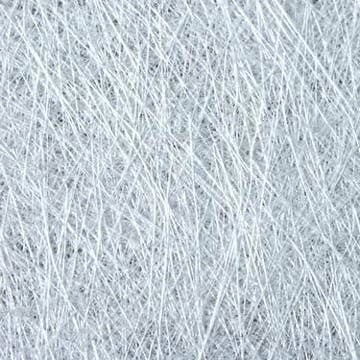You have no items in your shopping cart.
Do you have a project in mind but have no idea where to start? Let us help you. One of the first things you will want to do is decide what kind of fiberglass you want to use. Do you need to build up thickness fast? Are you concerned about strength? Do you have tight corners you are working with? Let us break things down a bit to help you decide if fiberglass cloth is right for your project or if you are needing chopped strand mat. Keep in mind that you can actually use both together to achieve your desired outcome. Below is an overview.
Fiberglass Cloth

(Plain weave fiberglass cloth)
Fiberglass Cloth is a woven fabric. Plain, 4 harness satin and 8 harness satin are the weave styles we carry. The 4, 6 and 10 ounce plain weave fabrics are the most commonly used. In this simple plain weave pattern, warp and fill yarns are interlaced over and under each other in alternating fashion. The plain weave is the easiest to handle since it does not unravel as much as the other weaves when cut.

In the four-harness satin weave pattern there is a three by one interfacing where a filling yarn floats over three warp yarns and under one.

The eight harness satin is similar to the four harness satin except that one filling yarn floats over seven warp yarns and under one. The satin weaves are slightly stronger and more pliable than the plain weave and are easier to conform to curved surfaces. They are more difficult to handle than the plain weave, though. Use fiberglass cloth when you are looking to create a strong, light weight product.

Chopped Strand Mat
Chopped Strand Mat (also known as fiberglass mat) has short strands of fibers held together with a resin binder. The fibers are randomly oriented. Mat is only compatible with polyester and vinyl ester resin. When resin is added to the mat, the binder dissolves and the fibers can be moved around. It is easier to conform mat to tight curves and corners than it is with weaved fabric. The reason chopped strand mat is not compatible with epoxy resin is because the binder holding the fibers together needs styrene to properly dissolve. Polyester and vinyl ester resins have styrene in them. (There are some places that sell chopped strand mat that is compatible with epoxy but it is hard to come by and much more expensive). Chopped strand mat is the least expensive fiberglass and is often used in mold construction or projects where thickness is needed. Mat is often used as the first layer (before the gelcoat) in a laminate to prevent print through. Print through is when the fabric weave texture shows through the resin. Chopped Strand mat does not have much strength. If you need strength you should choose a woven cloth or you could mix the two. Mat can be used between layers of woven fabric to help build thickness quickly and aid in all layers bonding well together.
For info on more fiberglass reinforcements and resin, check out our Ultimate Fiberglass and Resin Guidebook for Beginners.
For more detailed information on each fiberglass cloth we carry, you can CLICK HERE.
comments (57)
-

-
 Dakota
DakotaIm building a Mini camper on an old pop up trailer, im building the shell out of Wood and will be fiberglassing over for waterproofing and strength, what should i use? Chopped mat? Woven fabric? A couple layers of both?
-
 Fiberglass Warehouse
Fiberglass Warehouse@James- I would use vinyl ester, gel coat and chopped strand mat. Vinyl ester is waterproof, and gel coat protects the fiberglass and is UV resistant. And the chopped strand mat is cheap and easy. You can use fiberglass cloth, but it is a little more expensive.
-
 James Spalding
James SpaldingI plan on building 18“ x 18“ x 18“ planter containers. I’ve never worked with either fiberglass resin or epoxy. My thought was to use a plywood core and to glass in both inside and out.
Any suggestions you have for materials would be greatly appreciated. -
 Fiberglass Warehouse
Fiberglass WarehouseHI @Sharon Courtney- What is woven roving #8? I know 18 oz and 24 oz woven roving. As far as the lay up of the mold. The 4 layers of mat may be enough. Any more will just help it be stronger.










It is hard to say exactly not knowing how strong the wood frame is. What kind of resin do you want to use? Vinyl ester resin or epoxy?